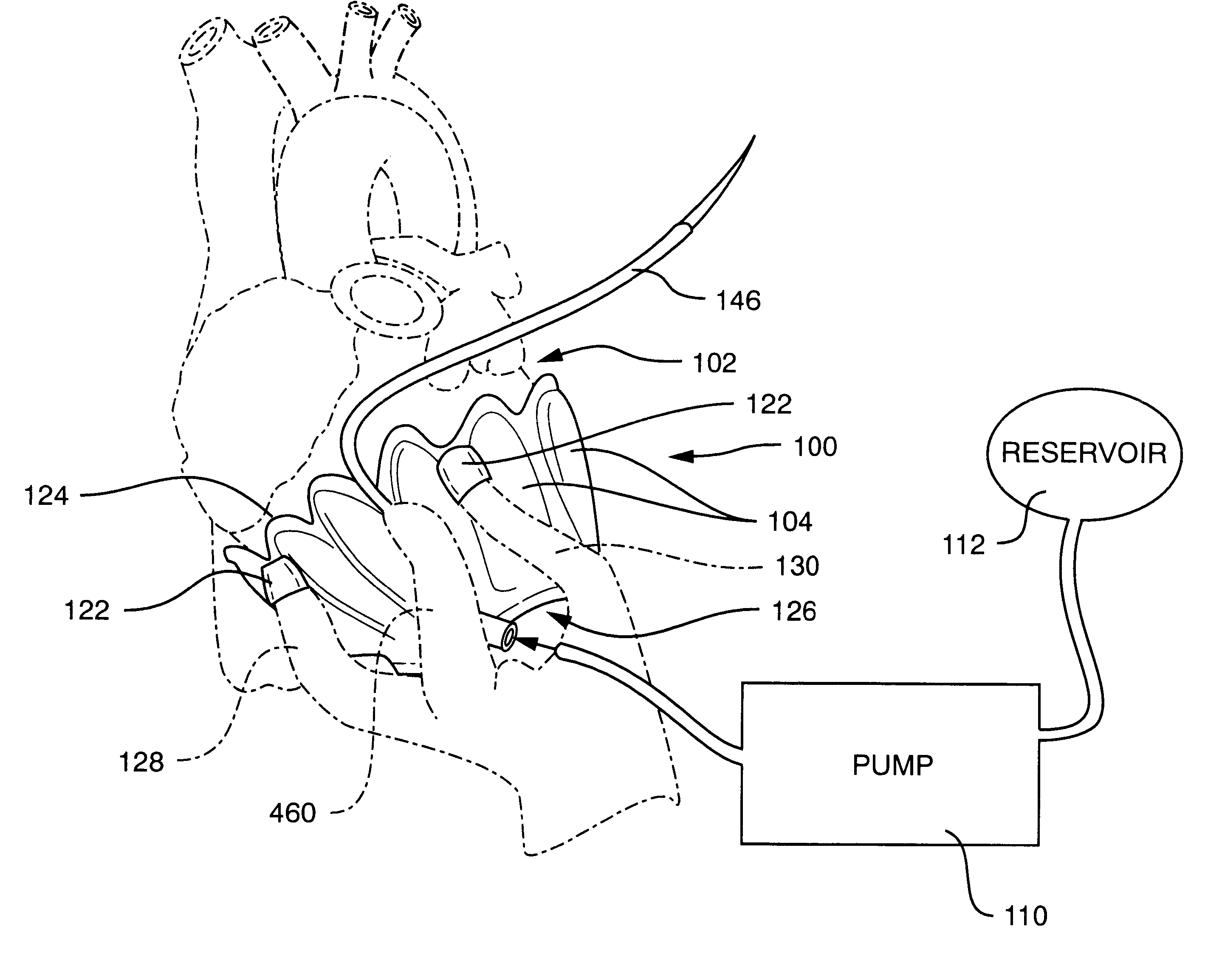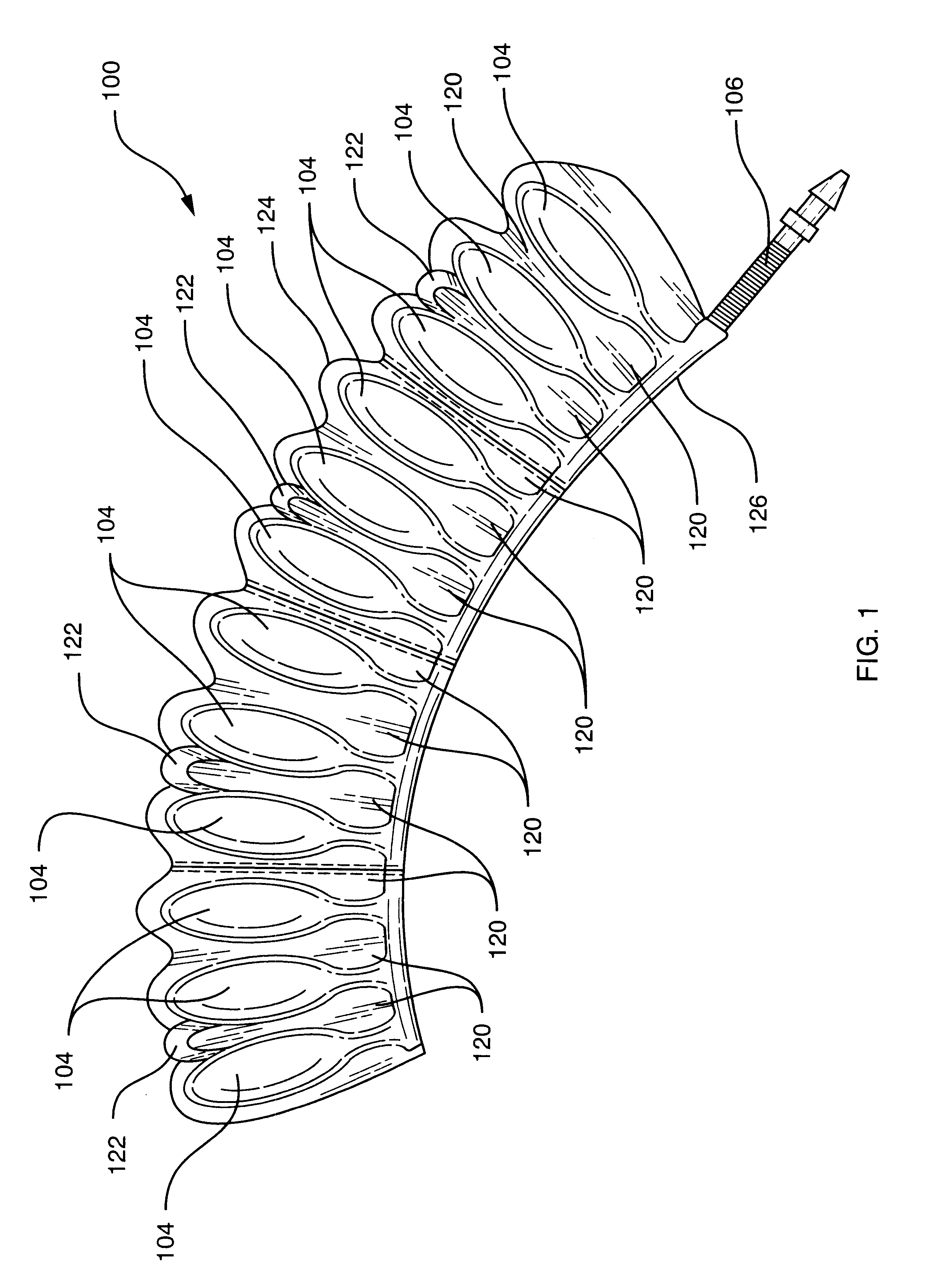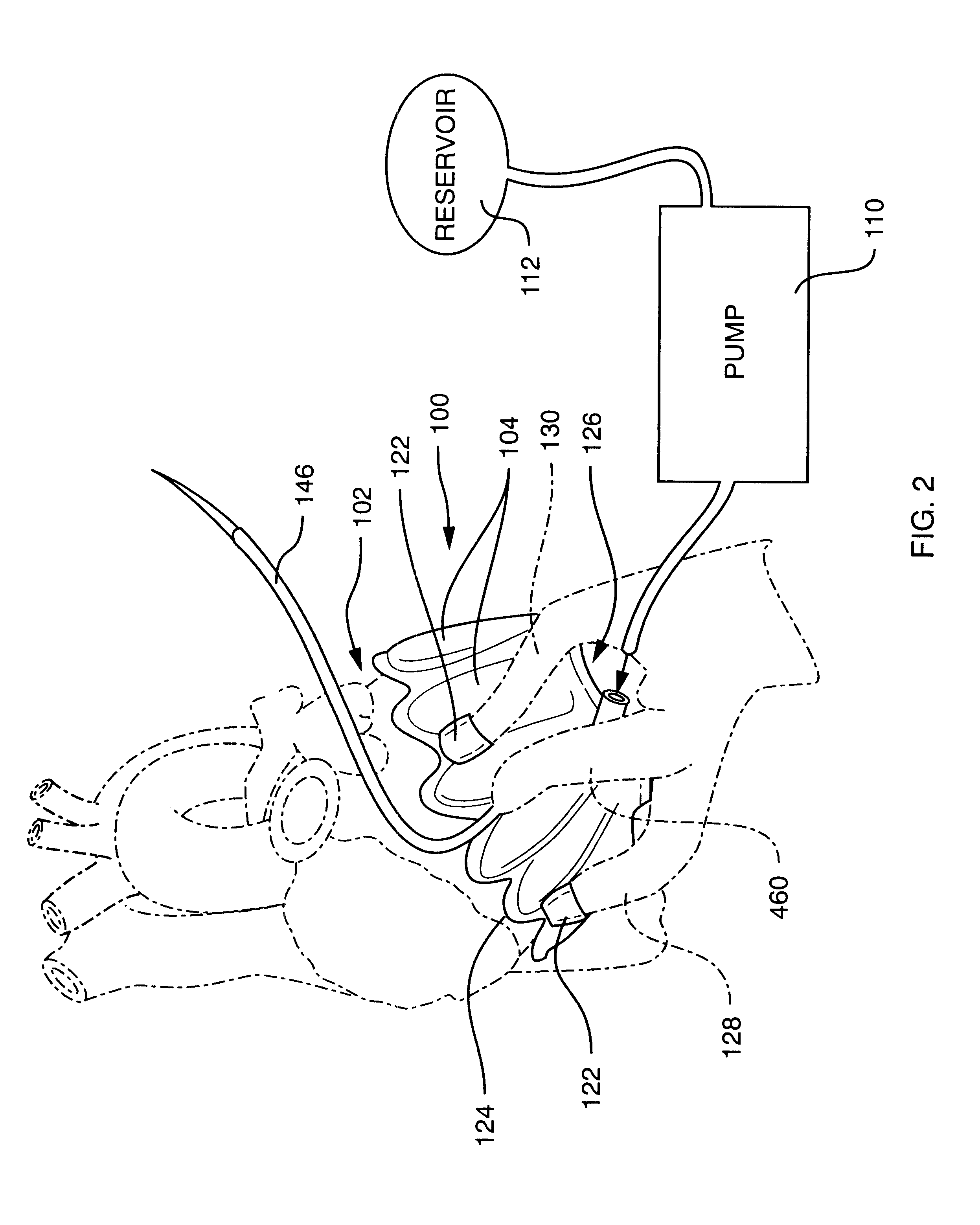System and method for implanting a cardiac wrap
a technology of implanted wraps and cardiac valves, applied in the field of internal organ wraps, can solve the problems of ventricular dilation clinically dangerous, possible thromboembolism, and the risk of clotting or thrombosis around the devi
- Summary
- Abstract
- Description
- Claims
- Application Information
AI Technical Summary
Benefits of technology
Problems solved by technology
Method used
Image
Examples
Embodiment Construction
FIG. 1 illustrates a cardiac wrap according to a preferred embodiment of this invention. The illustrated wrap is part of an extra-cardiac ventricular assist device, which includes attached pumping and control mechanisms. The wrap 100 is adapted to "wrap" around the ventricular portion of the heart to apply pressure to the ventricles. This relationship is shown generally in FIG. 2 in which the wrap 100 is placed on an exemplary heart 102. As described further below, the principles of this invention are applicable to a variety of devices for engaging, and encompassing a portion of the heart, or another organ. These devices will be generally termed "wraps" for the purpose of this description. In fact, such devices, as described herein, can include active devices, that expand and contract with respect to the heart, and passive devices that prevent continued dilation of the heart. In addition, these devices can be open prior to implantation (such as the wrap of FIG. 1), with opposing fre...
PUM
 Login to View More
Login to View More Abstract
Description
Claims
Application Information
 Login to View More
Login to View More - R&D
- Intellectual Property
- Life Sciences
- Materials
- Tech Scout
- Unparalleled Data Quality
- Higher Quality Content
- 60% Fewer Hallucinations
Browse by: Latest US Patents, China's latest patents, Technical Efficacy Thesaurus, Application Domain, Technology Topic, Popular Technical Reports.
© 2025 PatSnap. All rights reserved.Legal|Privacy policy|Modern Slavery Act Transparency Statement|Sitemap|About US| Contact US: help@patsnap.com



